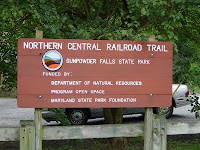Dr. Torrey C. Brown is one of our neighbors here at the Warehouse. The Hopkins-trained physician and one time assistant dean of the medical school is now a principal in a biotechnological firm. Yet, he has a far greater connection to Maryland sports that an office overlooking Camden Yards. For in those years between practicing medicine and developing cutting edge health products, Torrey Brown was a member of the Maryland General Assembly (where he chaired the Environmental Matters Committee) and, for twelve years, Secretary of the Department of Natural Resources. His influence, his legacy, is felt throughout Maryland in the parks and open spaces that provide enjoyment to so many.
Some of Maryland’s most prominent venues (like Fair Hill, Sandy Point, and Somers Cove Marina) are DNR properties. Others (like the rivers and our Bay) are DNR regulated. In fact, DNR manages more than 446,000 acres of public lands and 18,000 miles of waterways, along with Maryland's forests, fisheries and wildlife. Learn about DNR facilities and programs here: www.dnr.state.md.us/publiclands/pfwma2.html
During his tenure, Torrey Brown was responsible for a number of advancements in the state’s park and recreational assets, helping to make them the attractions they are for outdoor sports. He fought some tough battles, too. One of the most controversial was banning the harvest of rockfish for five years when the species was seriously endangered. That’s a story for opening day of rockfish season.
Another bold initiative was transforming a 21 mile segment of the deserted North Central Railroad corridor, stretching from Hunt Valley to the Mason-Dixon line, into an all purpose recreational trail. In 1984, such a concept was revolutionary and met with tremendous resistence. Now when we see hikers, cyclists, and equestrians of all ages enjoying the linear park year round, it’s hard to imagine the furor he faced from NIMBYs who opposed him back then. But Torrey prevailed, and in the process the North Central Rail Trail became a national model for this type of recreational adaptive reuse.
Today, more than 800,000 visitors annually enjoy the trail, which is part of Gunpowder Falls State Park. And now it is known as the Torrey C. Brown trail, having been renamed in 2007 to honor the physician/visionary/conservationist who wasn’t afraid to take a tough stand to do the right thing.
Our next adventure (Ashley’s going along for this gig) is a visit to the Torrey C. We’ll start in Monkton and see where it takes us.



No comments:
Post a Comment